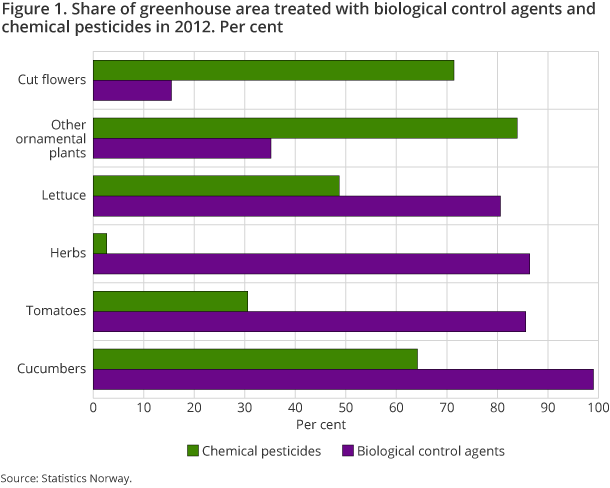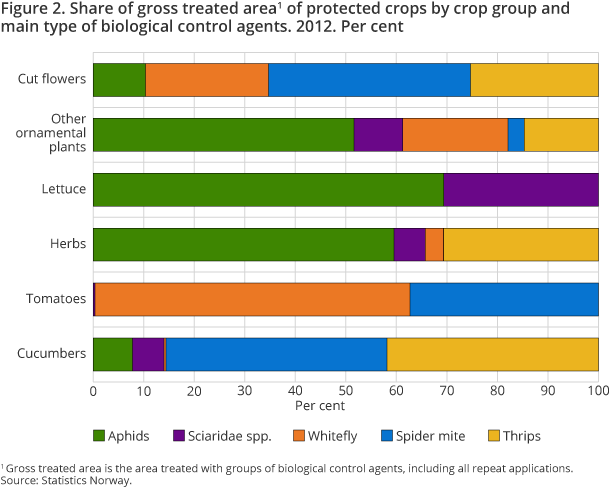Content
Published:
This is an archived release.
Extensive use of biological control agents in greenhouses
In 2012, biological control agents were applied to 90 per cent of the greenhouse area of edible crops, while chemical pesticides were used on 44 per cent of the area. Within ornamental plants, the corresponding shares were 32 per cent and 82 per cent respectively.
| Holdings with greenhouses, total | Greenhouse area, total (1 000 sq m) | Share of area treated with biological control agents | Share of area treated at least once with chemical pesticides | |
|---|---|---|---|---|
| 2012 | ||||
| Cut flowers | 36 | 72 | 15 | 71 |
| Ornamental crops | 198 | 445 | 35 | 84 |
| Lettuce | 32 | 87 | 81 | 49 |
| Tomatoes | 64 | 270 | 86 | 31 |
| Cucumbers | 50 | 242 | 99 | 64 |
Most vegetables are treated with biological agents
Examples of biological control agents are macro organisms such as insects and micro organisms like fungi and bacteria. For cucumbers, tomatoes and lettuce, the share of crop areas treated with biological control agents was 99, 86 and 81 per cent respectively. Within ornamental plants, the average share was 32 per cent. Some areas are treated with both biological control agents and chemical pesticides.
Frequent use of chemical growth regulators in flowers
As a whole, growth regulators accounted for about half of the gross area treated with chemical pesticides. Growth regulators are mainly used in flowering potted plants. In edible crops, fungicides accounted for almost 57 per cent and insecticides for 43 per cent of the gross pesticide treated area. Insecticides were most widespread on tomatoes and lettuce, while fungicides dominated on cucumbers.
Data sourcesOpen and readClose
Statistics Norway conducted its second survey on pesticide usage on protected crops in greenhouses in 2012. The survey comprised the following crops: cut flowers, other ornamental plants (flowering potted plants, bedding plants and decorative plants), lettuce, herbs, tomatoes and cucumbers.
Contact
-
Berit Bjørlo
E-mail: berit.bjorlo@ssb.no
tel.: (+47) 40 81 13 76
-
Per Amund Aarstad
E-mail: per.amund.aarstad@ssb.no
tel.: (+47) 40 81 13 79


